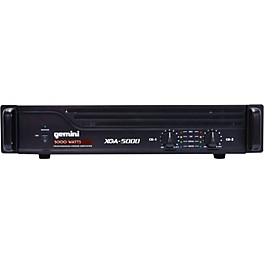AB Class Live Power Amplifiers
Best Match
16 matches found
10% Back In Rewards** thru 12/4
$35.40/mo.‡ with 48-month financing*
Learn More
10% Back In Rewards** thru 12/4
10% Back In Rewards** thru 12/4
10% Back In Rewards** thru 12/4
$24.98/mo.‡ with 48-month financing*
Learn More
10% Back In Rewards** thru 12/4
OpenBox:$175.96
10% Back In Rewards** thru 12/4
Top-Rated
OpenBox:$183.92
10% Back In Rewards** thru 12/4
OpenBox:$193.56
10% Back In Rewards** thru 12/4
$29.57/mo.‡ with 48-month financing*
Learn More
10% Back In Rewards** thru 12/4
10% Back In Rewards** thru 12/4
10% Back In Rewards** thru 12/4
$38.73/mo.‡ with 48-month financing*
Learn More
10% Back In Rewards** thru 12/4
$32.28/mo.‡ with 48-month financing*
Learn More
10% Back In Rewards** thru 12/4
$25.61/mo.‡ with 48-month financing*
Learn More
10% Back In Rewards** thru 12/4
$20.19/mo.‡ with 48-month financing*
Learn More
10% Back In Rewards** thru 12/4
- Previous
- 1
- Next
Adding a second transistor gives us a B-class amplifier, which fixes the efficiency problem by giving the peaks of the sound wave to one transistor, and the troughs to the second. But that leads to a new issue: a slight lag called "crossover distortion" when switching from one transistor to the other. To fix this, engineers add a little bit of voltage bias back into the circuit. The result is an AB-class amplifier, delivering most of the sound quality of an A-class amp along with most of the efficiency of a B-class. For those of us in need of high-performance amplification that won't roast itself in the process of doing its job, these are the sweet spot.
Since amplifiers are a tried-and-tested technology that's had lots of time to be refined, you won't find a huge difference between the core functions of any two models. So making the best choice for your needs often comes down to the feature set, power level, and even brand loyalty. Some AB-class live power amplifiers well-suited to an average setup would be the Cerwin-Vega CV-900 Power Amplifier and the QSC RMX850a Power Amplifier - but if you need even more power than that, check out the Cerwin-Vega CV-1800 Power Amplifier and the Behringer EP2000 EUROPOWER Power Amp. There's no right or wrong amp to pick; it's all a matter of deciding which one works for you.

